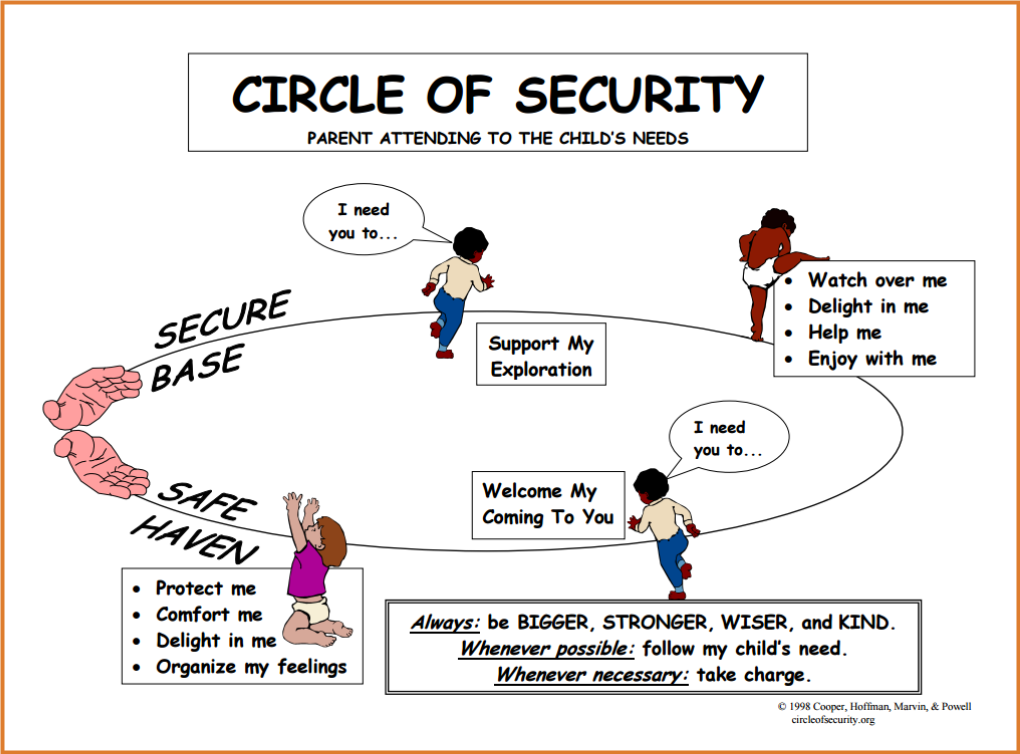
Understanding the Circle of Security in Parenting
Introduction:
Parenting is a journey filled with uncertainties, joys, and challenges. Amidst the chaos of everyday life, one approach stands out as a guiding light for parents seeking to foster secure attachments with their children: the Circle of Security. This article delves into the principles of the Circle of Security and how it can transform the parent-child relationship.
What is the Circle of Security?
At its core, the Circle of Security is a relationship-based parenting framework designed to enhance the bond between parents and children. It emphasizes the importance of providing a secure base from which children can explore the world and a safe haven to return to when they need comfort and reassurance. The circle metaphor represents the dynamic interplay between a child’s need for exploration and their need for emotional support from caregivers.
Building Secure Attachments:
Central to the Circle of Security is the concept of secure attachment. Securely attached children feel confident in their caregivers’ availability and responsiveness, allowing them to explore their environment with curiosity and independence. By consistently meeting their child’s emotional needs, parents lay the foundation for a strong and secure attachment bond that forms the basis of healthy relationships later in life.
The Role of Parental Sensitivity:
One of the key principles of the Circle of Security is parental sensitivity – the ability to attune to and respond promptly to a child’s cues and signals. When parents are sensitive and responsive to their child’s needs, they create a secure base from which the child can confidently explore the world. This emotional attunement fosters trust and security, reinforcing the parent-child bond.
Navigating the Circle:
The Circle of Security framework provides a roadmap for parents to navigate the ups and downs of the parent-child relationship. It encourages parents to be mindful of their child’s needs for both closeness and autonomy and to respond in ways that promote emotional security. By remaining attuned to the child’s cues and maintaining a balance between comfort and encouragement, parents can help their child develop a strong sense of self and resilience.
Overcoming Challenges:
While the Circle of Security offers valuable insights into parenting, it is not without its challenges. Parenting can be demanding, and maintaining a secure attachment bond requires ongoing effort and self-reflection. Parents may encounter obstacles such as their own attachment patterns, cultural influences, or external stressors. However, by remaining committed to the principles of the Circle of Security and seeking support when needed, parents can overcome these challenges and strengthen their relationship with their child.
Applying the Principles:
Applying the principles of the Circle of Security in everyday parenting can take many forms. It involves being present and attuned to your child’s needs, setting appropriate boundaries, and providing a secure base from which they can explore. It also means recognizing and responding to moments of distress with empathy and understanding, helping your child regulate their emotions and feel safe in the world.
Conclusion:
The Circle of Security offers a valuable framework for parents seeking to foster secure attachments with their children. By understanding the principles of the Circle and applying them in their everyday interactions, parents can nurture strong, resilient, and emotionally secure children. Through attunement, responsiveness, and a supportive presence, parents can create a lasting bond that lays the foundation for a lifetime of healthy relationships. Read more about parenting circle of security



